Root canal is a complex procedure requiring specialist training and equipment.
Teeth contain pulp, a sensitive tissue made up of blood vessels, nerves and connective tissue. If pulp tissue is damaged, for example, as a result of a broken tooth, the tooth must be treated. Exposure or inflammation of pulp is painful and will lead to complications that may include a tooth root abscess. Dogs respond to oral pain differently to humans, tending to hide it rather than complain about it. There is no reason to believe that a broken or abscessed tooth is any less painful for a dog or a cat than it is for a person.
Teeth with damaged pulp may be extracted or may undergo root canal treatment. “For smaller teeth which are less functionally important and where the procedure tends to be relatively straightforward, extraction is often the best option”. Larger, more important teeth (particularly the canines and carnassials) are worth preserving through root canal treatment, where possible. Extracting larger teeth is more complex and carries greater risk (root or jaw fracture and haemorrhage).
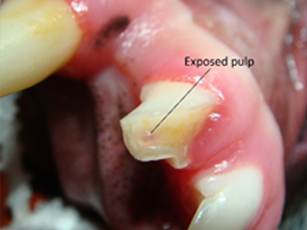
Broken incisor tooth with exposed pulp.
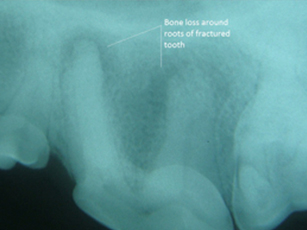
Bone loss around infected roots.
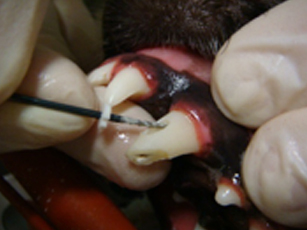
Shaping the canal with a hand file.

Endodontic files in a three-rooted tooth.
The first steps of a root canal treatment involve removing all the pulp material from the tooth, then cleaning and shaping the canal with endodontic files. The chamber created within the tooth then needs to be completely filled with inert materials (usually a type of rubber called gutta percha and a hard-setting calcium hydroxide paste). This is a complex procedure which requires specialised equipment and training. There is a very high success rate with root canal treatment.
With a fresh fracture, the root canal treatment can usually be completed in one session, but if the pulp has been dead or infected for a while it may be necessary to apply a temporary dressing to the canal to further disinfect it before completing the final treatment on another day (usually a few weeks later). Ideally, all root canal treated teeth should be x-rayed after six to twelve months, to check for any signs of problems.

Gutta percha points in both roots.
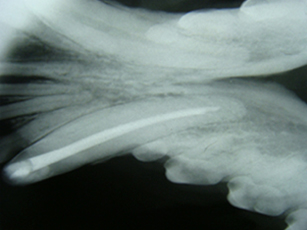
Post root canal radiograph.
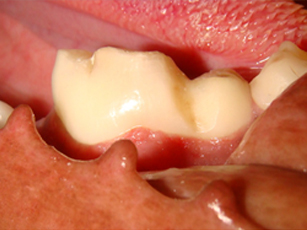
Post root canal appearance.
